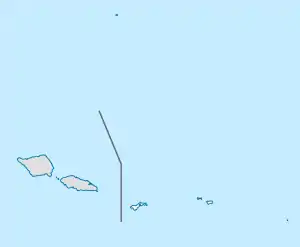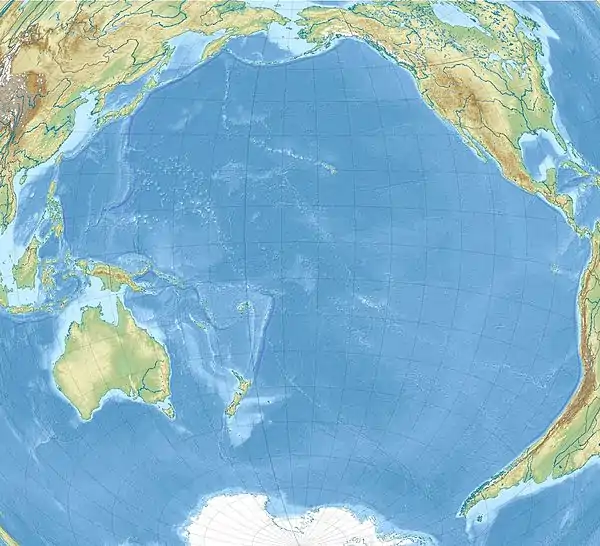Safotulafai | |
|---|---|
Village District | |
 Safotulafai  Safotulafai | |
| Coordinates: 13°40′54″S 172°11′6″W / 13.68167°S 172.18500°W | |
| Country | |
| District | Fa'asaleleaga |
| Time zone | -11 |
_and_two_chiefs_aboard_German_warship_taking_them_to_exile_in_Saipan_1909.jpg.webp)
Safotulafai is a traditional village at the east end of Savai'i island with historical and political significance in Samoa's history. It is the traditional center of the island of Savaii, now became the center of Fa'asaleleaga political district.
Safotulafai is the original 'Pule', which is why Savaii is called 'Pule' of Samoa. Years later, Safotulafai chose to divide the 'Pule' into six while reserving the right to be the 'Matua' of 'Pule'. Today, Safotulafai remains to be one of the traditional 'Pule' (customary authority) ruling districts of Savai'i. Chief (matai) council meetings are held at Fuifatu malae. Safotulafai is the village name with its sub-villages: Tuasivi, Fogapoa, Fatausi, Fuifatu, Fusi, and Eveeve.
History
In the early 1900s, during the time when the country was called German Samoa (1900 - 1914), this is also the place which saw the beginnings of the Mau, Samoa's independence movement.[1] This initial resistance movement against German colonial rule was called the Mau a Pule. It was led by well known orator Lauaki Namulauulu Mamoe from Satotulafai.[2] In 1909, Lauaki and other Mau a Pule supporters, including his younger brother who was also the holder of the 'Namulauulu' family chief title, bestowed by Namulauulu Lauaki at Falelatai, were trialed and exiled to Saipan by German Governor Wilhelm Solf. Some of the Mau a Pule died in exile.[3]
By the late 1920s, the Mau movement had gathered widespread national support under the New Zealand administration which followed from colonial rule by Germany.
In 1962, the country became the first Pacific nation to gain political independence, under its former name Western Samoa which formally changed to Samoa in 1997.
Matai chief titles
Safotulafai has strong traditional connections with Saleaula on the central north coast, through the paramount chiefly title (matai) of Letufuga. Safotulafai is always consulted by the village of Malie (Tuamasaga district) in conjunction with Manono Island (Aiga-i-le-Tai district), in the election of Malietoa title-holders.[4]
See also
References
- ↑ , Lagaga: a short history of Western Samoa by Malama Meleisea and Penelope Schoeffel Meleisea,p.117
- ↑ , International Dictionary of Historic Places: Asia and Oceania by Trudy Ring, Robert M. Salkin, Paul E Schellinger, Sharon La Boda, p. 726
- ↑ , An Account of Samoan History up to 1918, Chapter V, A Record of Events in Samoa since 1822 by Te'o Tuvale
- ↑ Augustin Krämer. The Samoa Islands: An Outline of a Monograph With Particular Consideration of German Samoa. University of Hawaii Press. p. 55.
